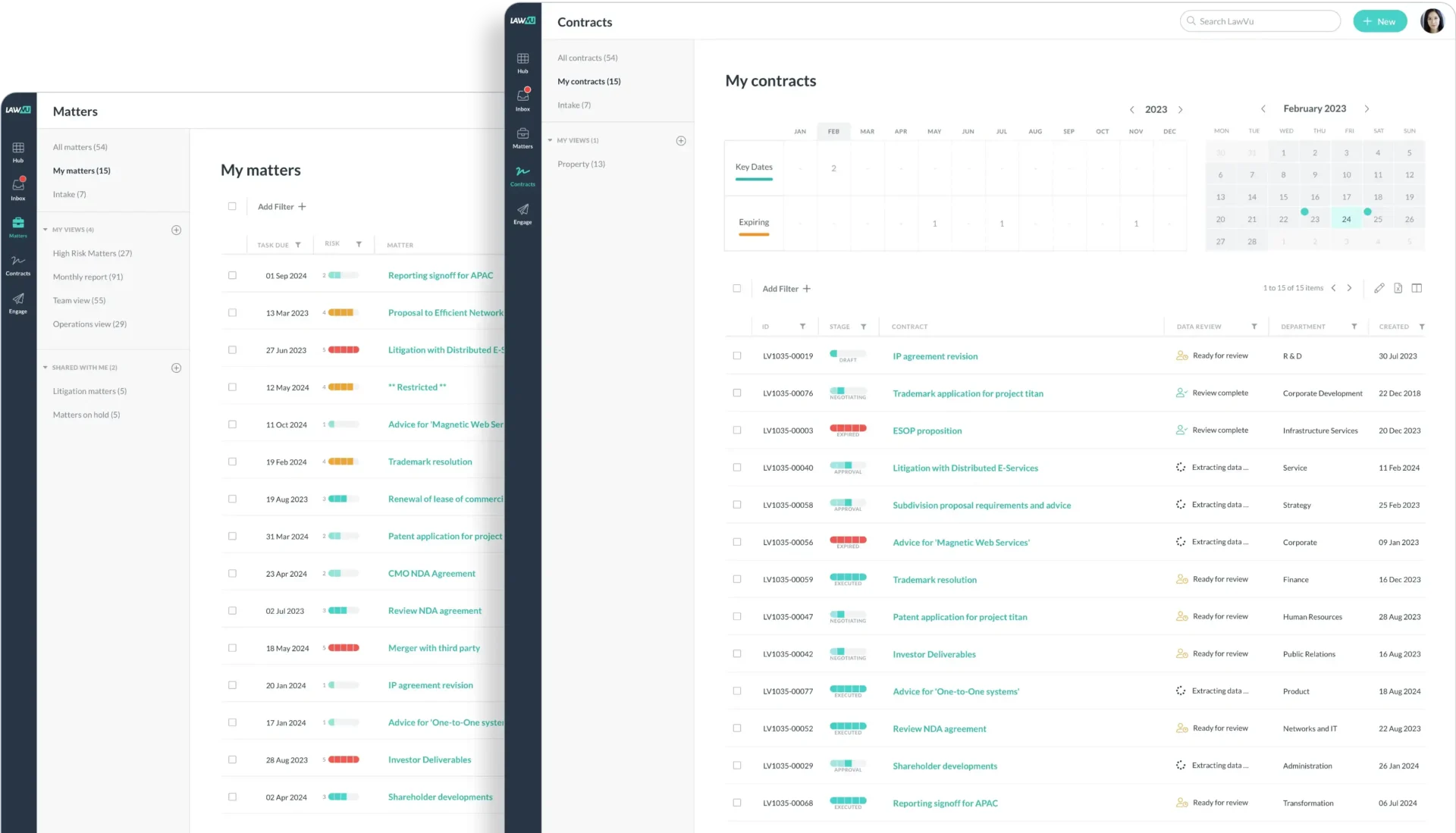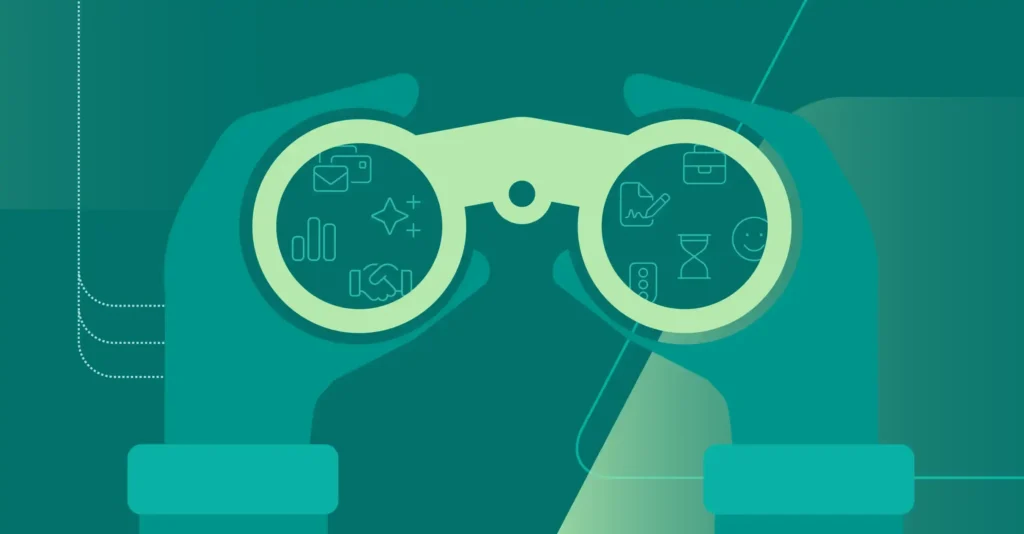From ad hoc to advanced: How to use the ACC legal operations maturity model to guide your technology strategy

In-house legal teams face a familiar pressure: support a growing business with limited resources, rising complexity, and increasing demand. It’s no wonder many legal departments are turning to technology – but knowing what to buy, when to implement, and how to drive adoption can be overwhelming.
That’s where the ACC Legal Operations Maturity Model (LOMM) comes in.
In a recent expert-led webinar, legal tech practitioners and transformation leaders Patrick Boucher (General Counsel, IMT Insurance), Liz Rancourt-Smith (Director of Legal Operations, Tilson), and Neil Smith (Head of Legal Operations and Transformation, LawVu) unpacked how the LOMM’s “technology management” maturity model can help legal teams prioritize investments, map real needs, and unlock more value from their legal technology.
This article is LawVu’s take on the highest value and most actionable takeaways from the session. Whether you’re just starting your legal tech journey or maturing your strategy, you’ll find insights you can use, with practical guidance from expert panelists.
What is the ACC legal operations maturity model?
The LOMM is a framework created by the Association of Corporate Counsel to help legal departments assess and elevate performance across 14 core functions, including technology management. Each function is evaluated across maturity stages: Early, Intermediate and Advanced.
The technology management track focuses on the lifecycle of legal tech, from planning and procurement to adoption, maintenance and continuous improvement. As described in the webinar’s introduction: “The updated ACC Maturity Model for technology management is designed to take you from ad hoc tools to strategic, scalable legal tech ecosystems.”

Now, let’s dive into five pieces of practical advice raised by the panel as they explored the model during the session:
1. Start with process, not products
Across the panel, a consistent message emerged: don’t jump straight to tools. As one speaker put it, many in‑house teams “leap to tech as their first thing to sort” but it’s a mistake to start there. The correct starting point is understanding the work. Here are some things the panel advised:
- Map the work you’re actually doing. Neil suggests using lightweight lifecycle/process mapping to surface bottlenecks, duplicated steps and handoff gaps – especially in high‑volume areas like intake/triage, contracts and spend. Even a whiteboard or sticky‑note exercise will reveal where time is lost and where standardization would help.
- Frame requirements around problems, not features. Liz asks “What problem are we trying to solve?” at every stage (procurement, adoption and implementation) to prevent scope creep and focus on what’s important.
- Protect what already works. Don’t optimize away proven workflows. Patrick suggests “starting with what you already do well and with what technology can continue to support – otherwise you could end up sourcing a solution that solves a lot of your pain points, but doesn’t support the things you were already doing well.”
By defining the work first – where the friction is, who’s involved, what “good” looks like – you’ll be able to evaluate technology against clear use cases, avoid overbuying and set up implementation for success.
2. Build a technology roadmap with emphasis on pre-planning
The best way to avoid overwhelm is to create a flexible, forward-looking roadmap. Liz highlighted the value of doing advance planning, research, and keeping on top of trends to inform the roadmap behind the scenes – so you are ready when the urgency hits.
To paraphrase a conversation between Neil and Liz: “A loose agile map is better than no map at all. Because it’s directional, it doesn’t need to be perfect, it just needs to exist. So much of legal operations is about getting started – if you start that work early, you can get off on a good foot when you need to move forward.”
The webinar included examples of real roadmaps, including a best practice version that Liz recommended to help people work through what she calls “the four phases of roadmap development”. Placing emphasis on the planning and preparation stage, Liz highlighted this phase’s ability to “help us assess what we have currently, and what we might need to add in the future,” after which we can “vision and develop into a plan”.
It’s worth noting that the ACC Maturity Model can also be a useful tool for teams to see which gaps might exist in their tech stack and what investments will align with their organization’s business priorities.
At the end of the day, the presenters agreed that even a basic roadmap gives you a baseline to build from and makes it easier to communicate your vision with stakeholders.
3. Move from spreadsheets to shared systems
Spreadsheets have their place, but at some point they become more of a burden than a tool.
As Patrick said: “The spreadsheet is a necessary evil when you don’t have technology to do the tracking for you. I can’t tell you how many different spreadsheets I’ve used for different types of project tracking, different types of legal matters that are ongoing, the different audiences that maybe you need to share those trackers with. Managing all of those lists was like a fulltime job in and of itself.”
Diving into the advantages of dedicated legal technology over spreadsheets, the panelists emphasized that while spreadsheets might get you started, purpose-built legal tech helps you see more, do more, and deliver more value.
As Patrick explained, “Spreadsheets only provide a snapshot in time. Very seldom do you have spreadsheets that do a really good job of showing you a historical perspective on the matter you’re working on, or that keep previous status updates automatically so you can go back and see how we’ve progressed in that matter. Or where were the issues, where were the roadblocks, where were the hiccups?”
Another opportunity that technology offers, according to the panelists, is better stakeholder engagement. “We talk about legal as a business partner,” Patrick said, “and it’s very difficult to have a single spreadsheet that does a really good job for any of the stakeholders that you’re reporting to.”
In contrast to spreadsheets, legal technology centralizes information, automates repetitive steps, and generates actionable insights.
At the intermediate stage of the ACC model, teams often begin deploying systems like legal hold, matter management and e-billing. These are often supported by cross-functional input and a structured approach to prioritizing automation.
Even simple improvements, like shared intake portals or automated NDAs, can reduce the manual admin that drains legal’s time and creates meaningful value for the business.

The panel discussed the advantages of a central source of truth like these “Contract and Matter grids” in LawVu over the use of spreadsheets.
4. Don’t underestimate adoption and maintenance
As the panelists emphasized, success with legal tech requires champions, change management and continuous evaluation.
According to Neil, “You can buy the fanciest piece of kit in the world, but without adoption, there’s no point.
At more mature stages, legal operations leaders provide standardized onboarding, drive long-term adoption and lead change management efforts – from implementation through user feedback and continuous improvement.
Proactive practices like user groups, regular training and ownership of ongoing enhancements can help teams move from reactive to optimized tech operations.
The panel stressed that adoption, good implementation and long-term maintenance will determine whether your investment delivers ROI.
As Liz put it:
“You can’t set it and forget it. You need leadership and someone who continually evaluates processes, monitors the data and provides continuous training.”
She builds this into her five-year technology roadmap, ensuring that evaluation, change management and training are treated as core operational activities and not afterthoughts. Maintenance includes:
- Regular process and data review to identify gaps or new efficiencies
- Ongoing training to help current and new team members use the tool effectively
- Continuous feedback loops to gather user input and prioritize enhancements
As Liz explained, this kind of disciplined maintenance is as important as adding new tools – if not more. By optimizing the tools you already have, legal teams get better performance, increase adoption and make financially sound decisions before pursuing additional tech investments.
5. Align legal technology with business goals and data
While the ACC model highlights business alignment most explicitly in the advanced stage, our speakers agreed it’s a critical thread that should run through every stage of maturity. As Neil reminded the audience: “We need to always concentrate on what hat we should be wearing – a legal hat or a business hat – or preferably a hat that has both names on it.”
At the early stage, that might mean involving business stakeholders in identifying pain points or defining what success looks like. In the intermediate stage, it can look like building self-service tools or automating approvals that enable business users to move faster with less legal drag.
At the advanced stage, alignment becomes strategic. Legal tech is fully integrated across departments, legal dashboards tie to business KPIs, and the team uses system data to demonstrate performance and guide decisions. Technology becomes an integrated part of the business stack, enabling things like automation, better collaboration and measurable outcomes. Legal data starts to drive decision-making across the business. To illustrate the point, Patrick described the advanced stage of Contract Lifecycle Management solutions as being about “how we can make it more usable for our business stakeholders? How can we use it to drive better renewal negotiations? How can we be proactive with our solutions for things we already have on contracts that maybe are not meeting our needs?”
In short, true legal tech maturity isn’t just about tools – it’s about becoming a trusted business partner at every stage, using technology and data to drive impact across the organization.
Final thoughts: Maturity is a journey, not a scorecard
All three speakers emphasized that maturity isn’t about getting to “advanced” on every axis. It’s about knowing where you are, aligning to your business needs, and making deliberate, strategic progress.
As Liz said:
“It’s not a game of ‘how do I get everything to advance [levels]?’ Because maybe advanced isn’t right for your organization either, it’s more about seeing the possibilities. I use [items in the maturity model] as a menu item that I could choose to have in my meal.”
If you’re looking to do more with less, to increase legal’s impact and make smarter technology choices, the ACC model is a great place to start.
Explore the resources below for more help successfully identifying and deploying technology that transforms your legal operations:



